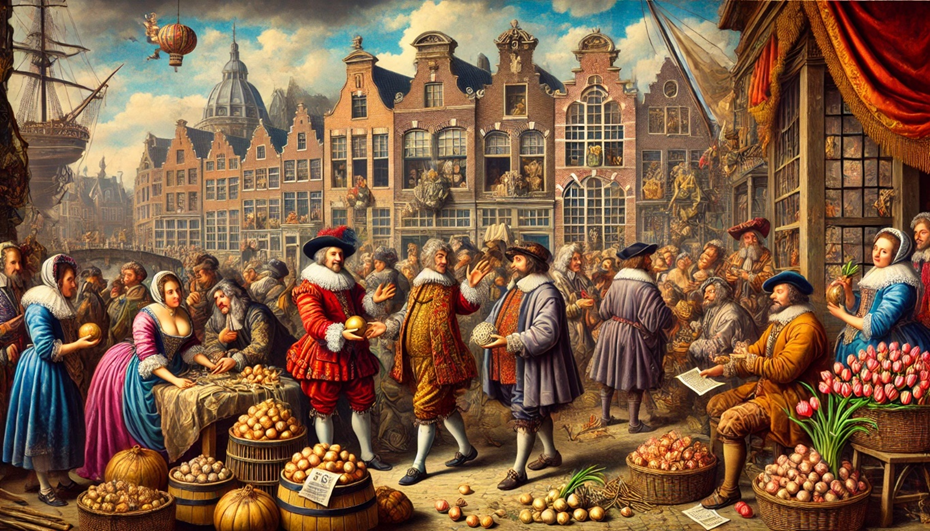The Tulip Mania
In the 17th century, the Netherlands experienced an extraordinary economic phenomenon now recognized as the first financial bubble in history: the tulip mania. During this period, tulip bulbs became the focus of rampant speculation, reaching absurd values before the bubble burst in 1637. This episode provides a timeless lesson about the dangers of unchecked speculation.
Context: Prosperity and Exoticism
The Netherlands in the 17th century was a model of economic success. The Dutch East India Company had established the country as a commercial powerhouse, and wealth flowed into a society seeking new ways to display status. In this environment, exotic flowers like tulips, introduced from the Ottoman Empire, became symbols of luxury and prestige.
An unexpected phenomenon further boosted the tulip's allure. Some bulbs infected by a virus transmitted by aphids developed unique and colorful patterns. These multicolored tulips, impossible to replicate, became highly desirable, driving their prices to unprecedented levels. For many, owning a rare tulip was more than a trend—it was an investment.
The Growing Tulip Craze
The value of tulips began to soar in the 1620s, as the rarest varieties were given illustrious names and achieved almost mythical status. In some cases, a single bulb could sell for the equivalent of 15 years of a skilled worker’s salary. Historical records detail absurd transactions: luxurious properties exchanged for a single bulb, and rare flowers purchased for amounts that today would be worth hundreds of thousands of dollars.
In the frenzy, a futures market emerged, known as windhandel (“air trading”), where bulbs not yet harvested were traded. These markets, often informally organized in taverns, involved people from all social classes. From the bourgeoisie to artisans, everyone joined in, driven by the promise of quick and massive profits. At the peak of the mania, profits reached 500% in just weeks.
The Climax and Collapse
In February 1637, the bubble reached its peak. A lot of 99 rare bulbs sold for 90,000 guilders, an astronomical sum for the time. Shortly after, the market collapsed. A batch that would have fetched thousands of guilders days earlier failed to find buyers. Panic spread, and prices began to plummet.
The fallout was catastrophic. Many had mortgaged properties or incurred massive debts to participate in the market. When the bulbs lost their value, a wave of bankruptcies ensued, impacting all social classes. Even those who had initially profited suffered as gains evaporated in the market's collapse.
Factors That Aggravated the Crisis
Several factors exacerbated the impact of the tulip crash. The lack of regulation in the futures market and the challenges of enforcing contracts in such an informal system added volatility. Additionally, a bubonic plague epidemic that had decimated the Dutch population in 1636 heightened the speculative frenzy by reducing labor availability and creating a sense of scarcity.
When prices began to fall, the absence of confidence in the financial system and the inability to meet contractual obligations led to total collapse. What had started as an exotic trend ended in an economic crisis that deeply affected the Dutch economy.
Lessons from Tulip Mania
Tulip mania is not just a curious episode in economic history but also a reminder of the dangers of uncontrolled speculation. While financial contexts and instruments have evolved since then, the human behaviors driving economic bubbles remain unchanged.
Today, tulip mania serves as a warning: even the most valuable assets can lose their luster when markets are driven by unrealistic expectations. In a world of increasingly complex financial systems, this 17th-century episode remains relevant for those seeking to invest wisely.

